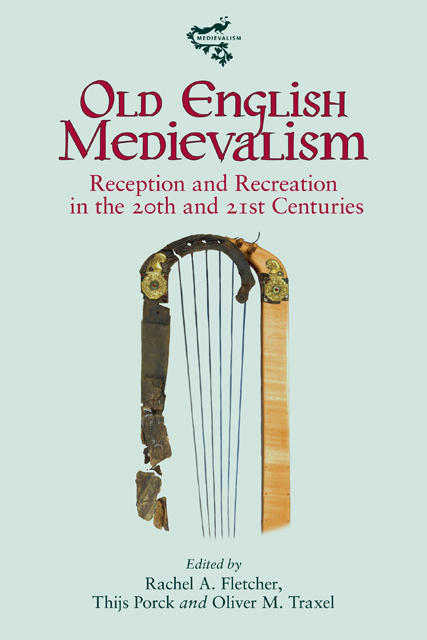Book contents
- Frontmatter
- Contents
- List of Illustrations
- List of Contributors
- Acknowledgements
- List of Abbreviations
- Early Medieval English in the Modern Age: An Introduction to Old English Medievalism
- I Reinventing, Reimagining and Recontextualizing Old English Poetry
- II Invoking Early Medieval England and Its Language in Historical Fiction
- III Translating and Composing in Neo-Old English
- IV Approaching Old English and Neo-Old English in the Classroom
- Bibliography
- Index
- Medievalism
13 - The Magic of Telecinematic Neo-Old English in University Teaching
Published online by Cambridge University Press: 17 December 2022
- Frontmatter
- Contents
- List of Illustrations
- List of Contributors
- Acknowledgements
- List of Abbreviations
- Early Medieval English in the Modern Age: An Introduction to Old English Medievalism
- I Reinventing, Reimagining and Recontextualizing Old English Poetry
- II Invoking Early Medieval England and Its Language in Historical Fiction
- III Translating and Composing in Neo-Old English
- IV Approaching Old English and Neo-Old English in the Classroom
- Bibliography
- Index
- Medievalism
Summary
Introduction
Today, the Middle Ages speak to us in many voices and through different media. In the telecinematic medium, this trend manifests itself in an approach to the Middle Ages which attempts to be as authentic as possible within the general framework of the productions of telecinematic fiction. This is visible in the depicted architecture, costumes and hairstyles, for instance, but also linguistically. The focus of this chapter is neo-Old English, that is, Old English speech created on a modern academic basis. In particular, it concentrates on neo-Old English in telecinematic discourse, which is defined as discourse in film productions for television and cinema. The TV series Merlin, for instance, originally broadcast between 2008 and 2012, is set in the early Middle Ages in ‘Albion’, with a protagonist who casts his magic spells in (neo-)Old English. The focus here is not on judging the correctness of the translations or specific acting skills. Rather, it will be argued that profiting from the popular appeal of the magic of the telecinematic revival of a past language stage is a rewarding challenge in the context of academic teaching.
What? – Taking Stock of Neo-Old English on the Screen
On the basis of a brief overview of current telecinematic projects involving Old English (Section 2) and a discussion of the current convergence of two popular trends, namely (linguistic) realism in telecinematic productions and medievalism (Section 3), the focus will shift to a reflection on the challenges (Section 4) and profits (Section 5) of teaching Old English with the help of telecinematic neo-Old English. It will be discussed how the students can experience first-hand that Old English was once a fully functional medium of communication – as it still is in its neo-Old English form – and not something dead and purely academic. This might kindle their interest in investing energy in its deeper study. Starting from chosen examples provided on the screen, teaching resources such as Peter S. Baker’s website ‘Old English Aerobics’ for phonology, morphology and syntax and research resources such as the Thesaurus of Old English and the Oxford English Dictionary for lexicology and semantics are introduced as aids in learning to understand, and maybe even create, (neo-)Old English.
- Type
- Chapter
- Information
- Old English MedievalismReception and Recreation in the 20th and 21st Centuries, pp. 243 - 264Publisher: Boydell & BrewerPrint publication year: 2022

